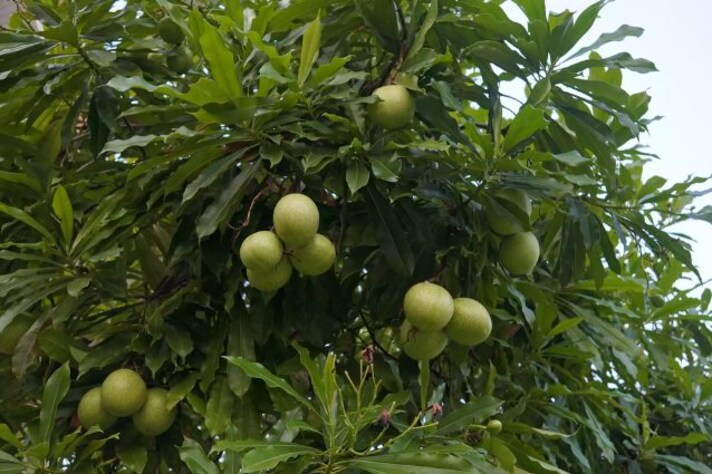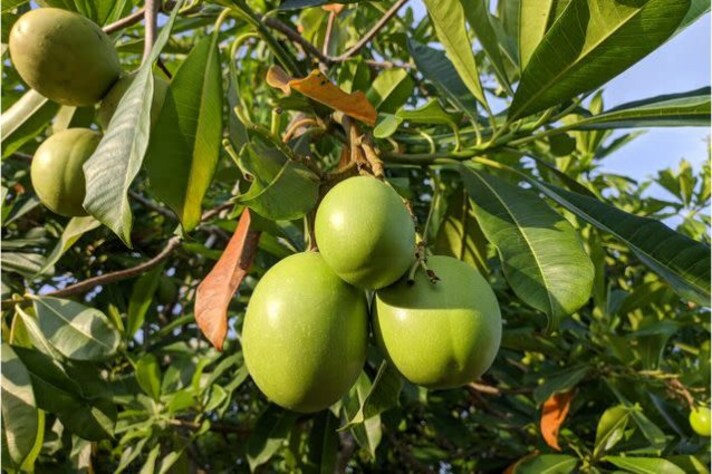What is The “Suicide Fruit” You Saw in The White Lotus? Is It Real? Is It Really That Dangerous?
The "suicide fruit" featured in The White Lotus finale has sparked curiosity and concern. Based on the real-life Cerbera odollam, this toxic fruit carries a deadly reputation, but its portrayal on the show is more dramatized than fact. Discover the true story behind the myth and what makes this fruit so dangerous.

In the gripping finale of The White Lotus Season 3, viewers were left with a chilling scene that has since become a hot topic: a fruit known as the "suicide fruit." While the show’s eerie tone and dark humor are no strangers to unsettling moments, this particular fruit caught the attention of many. The question soon arose: is this "suicide fruit" a real and lethal thing, or just another piece of fictional flair from the show's creators?
The Fictional Scene and the Growing Curiosity
The White Lotus finale presented a tense moment with the fruit, featuring its ominous name and a portrayal of how it could cause harm. It was a striking choice for the show’s writers to introduce this dangerous "suicide fruit," heightening the mystery and allure of the location where the story unfolded. But viewers weren't the only ones curious about the origins of this fruit. The name "suicide fruit" sparked discussions and led people to wonder if it was a real thing.
As the story progressed, the fruit’s potential lethality was explored. The fruit is portrayed as being so deadly that even touching it might be enough to cause fatal consequences. As tempting as the idea of consuming something so dangerously alluring sounds, many were left wondering if it was a mere figment of the writers' imaginations or based on an actual plant found somewhere in the world.
The "Suicide Tree" Behind the Myth
The fruit shown in The White Lotus is rooted in reality, albeit with a dose of dramatic flair. In fact, the "suicide fruit" is based on a real tree: the Cerbera odollam, more commonly known as the "suicide tree" or "pong pong tree." This tree is native to Southeast Asia, and its fruit contains toxins capable of causing death when ingested. These toxins, primarily cardiac glycosides, can disrupt the heart's rhythm, leading to fatal outcomes. The Cerbera odollam has earned its morbid nickname due to its role in numerous cases of suicide and poisoning.

While this tree certainly has a dark reputation, it's not exactly the "magical" fruit seen on The White Lotus. In real life, the fruit isn’t typically consumed directly, and most instances of poisoning are due to people intentionally ingesting the seeds. It's essential to understand that while the suicide tree can indeed be deadly, the depiction of the fruit in the show is an exaggeration—this isn't a fruit that can simply be touched or handled to cause immediate harm.
How Dangerous Is the "Suicide Fruit" Really?
While the Cerbera odollam is genuinely toxic, it’s not quite as instantaneously dangerous as The White Lotus makes it seem. In real life, poisoning from the fruit is often the result of consuming its seeds, which must be carefully prepared and processed for those attempting to commit suicide. That said, these seeds are notoriously difficult to break open, and it’s believed that traditional poisonings are often the result of multiple seeds being ingested. The amount needed to cause harm varies depending on factors like the individual's health and the method of ingestion.
In reality, the fruit does not immediately wreak havoc just from touching it. The actual risk comes from ingesting or mishandling the seeds, which contain a potent toxin that interferes with the heart’s electrical impulses, leading to arrhythmia and, in extreme cases, cardiac arrest. But it’s important to note that while the tree is undoubtedly dangerous, it's far less "hands-off" lethal than The White Lotus implies.

;Resize,width=767;)
;Resize,width=712;)

;Resize,width=712;)
